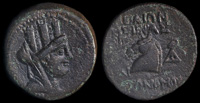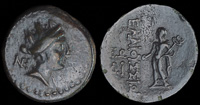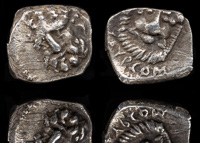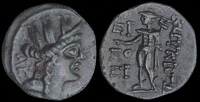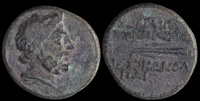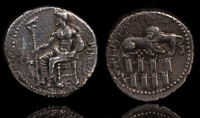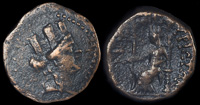Cilicia
Earliest occupation of Zephyrion.
Fortifications are constructed at Zephyrion.
Kelenderis becomes the eastern-most member of the Delian League, headed by Athens.
Peace of Kallias, an agreement between Athens and Persia after a series of conflicts between them. In Cyprus, Amathos, Kelenderis, and Salamis remain under Persian control but maintains its local autonomy. Ephesos, Miletos, Priene, Klazomenai, and Phokaia also obtain some autonomy.
Alexander the Great conquers Cilicia and Pisidia, including Aigai.Tarsos (where he became ill after a swim in the Kydnos River), Soloi, Sagalassos, and Issos.
Alexandria ad Issum founded by Alexander III.
Alexander the Great arrives at Mallos, builds a bridge over the Pyramos, sacrifices to Amphilochos, and exempts it from paying taxes.
Mallos gives ships to aid Alexander III in the Siege of Tyre.
Balakros is kiled while dealing with an insurrection by the Isaurians and Larandians.
Perdikkas besieges Isaura Palaia. Its inhabitants set it on fire and burn their wives and children alive rather than submit them to slavery.
Approximate foundation of Seleukeia ad Kalykadnon. The inhabitants of Holmoi migrate there.
The city of Arsinoe in Cilicia is founded by Ptolemy II Philadelphos on land taken from Nagidos.
Mallos and Tarsos ally against Antiochos IV Epiphanes.
Approximate date when Nagidos is abandoned, possibly due to pirate activity.
Soloi is sacked by Tigranes the Great.
Isaura Palaia is destroyed for a final time by the Roman Servilius Isauricus. A new city was eventually built elsewhere and called Isaura Nea.
Seleukeia on the Issos (Rhosos) is annexed by Rome.
Julius Caesar visits Aigai during his campaign in the east. He also visits Antioch and declares its freedom.
Cassius Longinus schemes to kill Julius Caesar at Tarsos.
October
King Archelaos dies, and his kingdom, including Elaiussa Sebaste, is annexed by the Roman Empire under Emperor Tiberius. This ends the Cappadocian kingdom.
A stone bridge is built by L. Octavius Memor at Seleukeia ad Kalykadnon.
The harbor of Soloi is renovated by Antoninus Pius.
Septimius Severus sails to Aigai in preparation for a Parthian campaign.
Isaura becomes an independent state with Seleukeia ad Kalykadnon as its capital.
July
Maximinus Daza dies in Tarsos, possibly due to Graves’ disease.
Constantius Gallus raises a siege of Seleukia ad Kalykadnon by troops loyal to Shapur.
Soloi is destroyed by an earthquake and abandoned.
